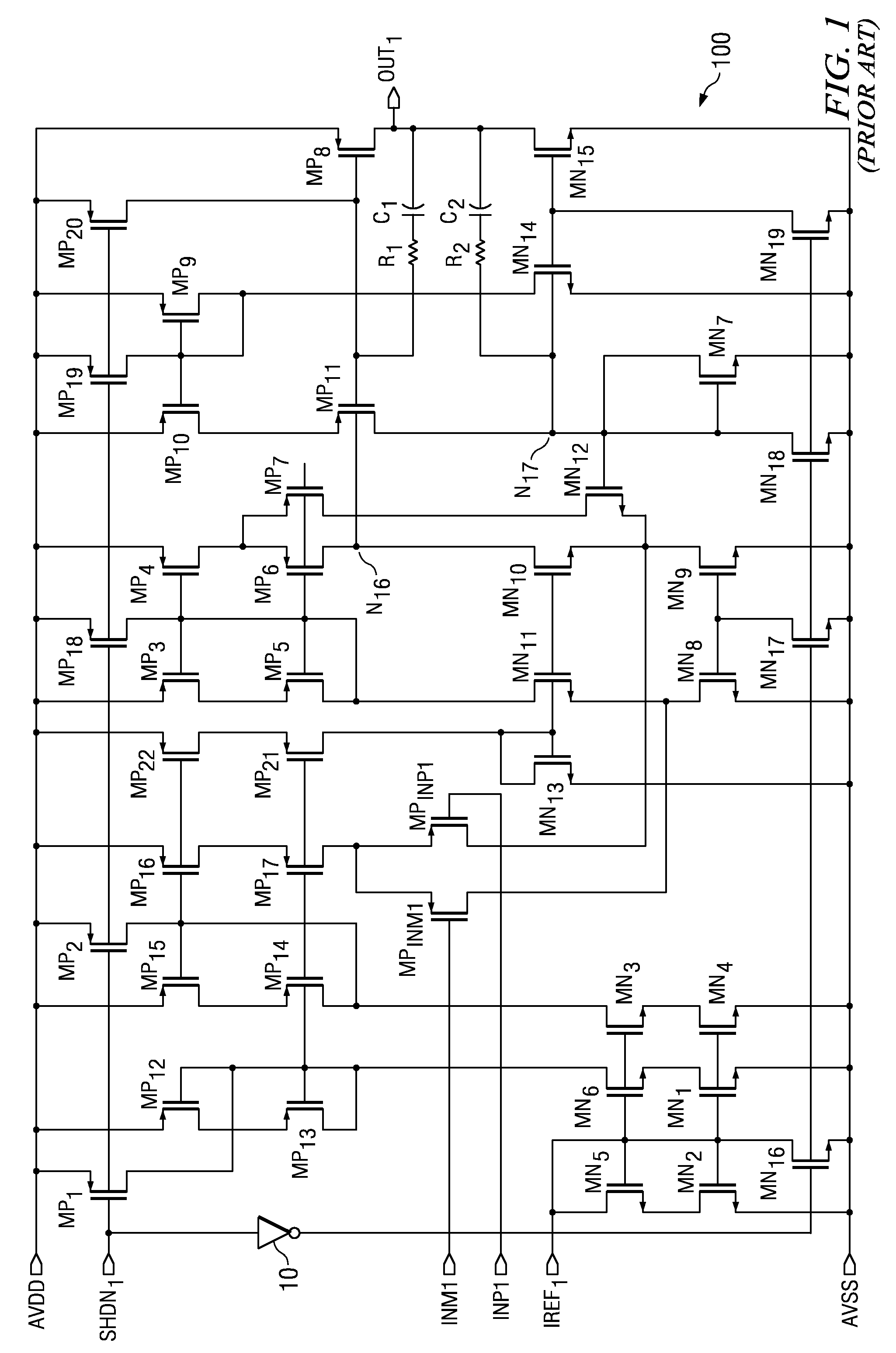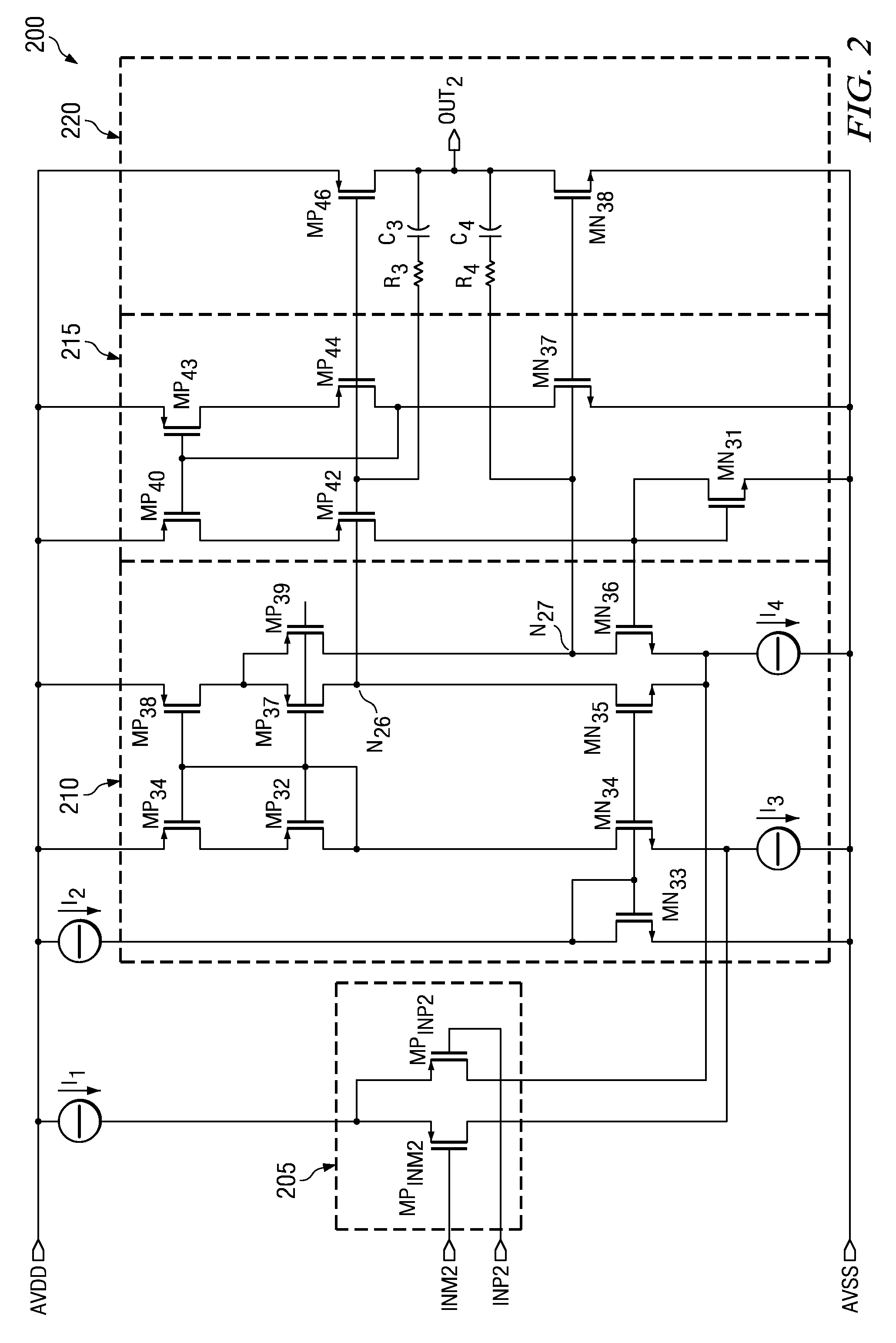Low voltage amplifier having a class-AB control circuit
a control circuit and low-voltage amplifier technology, applied in the direction of dc-amplifiers with dc-coupled stages, differential amplifiers, amplifiers with semiconductor devices/discharge tubes, etc., can solve the problems of performance degradation, analog cells suffer from the reduction in size, and the class-ab control circuit within the amplifier shown in fig. 1 has a significant disadvantage, so as to reduce the effect of surge current and less dependent on process variation
- Summary
- Abstract
- Description
- Claims
- Application Information
AI Technical Summary
Benefits of technology
Problems solved by technology
Method used
Image
Examples
Embodiment Construction
[0023]One or more exemplary implementations of the present invention will now be described with reference to the attached drawings, wherein like reference numerals are used to refer to like elements throughout. The various aspects of the invention are illustrated below in a low voltage amplifier having an input stage, a summing circuit, a class-AB control circuit, and an output stage, although the invention and the appended claims are not limited to the illustrated examples.
[0024]One embodiment of the low voltage amplifier having a class-AB control circuit configured as a folded cascode amplifier which generates minimal or no surge current when the output of the amplifier clips to ground or the negative rail is illustrated in FIG. 2. As shown, an input stage 205 connects to receive a positive and a negative input, INP2 and INM2, to receive a differential input signal. A first and second current source, I1 and I2, connect to the input stage 205 and the summing circuit 210, respective...
PUM
 Login to View More
Login to View More Abstract
Description
Claims
Application Information
 Login to View More
Login to View More - R&D
- Intellectual Property
- Life Sciences
- Materials
- Tech Scout
- Unparalleled Data Quality
- Higher Quality Content
- 60% Fewer Hallucinations
Browse by: Latest US Patents, China's latest patents, Technical Efficacy Thesaurus, Application Domain, Technology Topic, Popular Technical Reports.
© 2025 PatSnap. All rights reserved.Legal|Privacy policy|Modern Slavery Act Transparency Statement|Sitemap|About US| Contact US: help@patsnap.com



